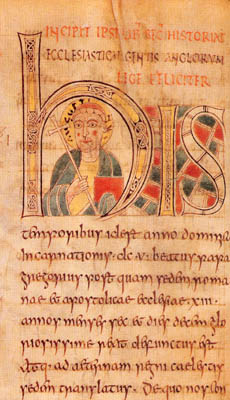Saint Augustine of Canterbury
Feast Day May 27

Little is known of the early life of sixth-century Augustine of Canterbury, except that he became a great monk and was a friend of Pope Gregory the Great. Gregory appointed him to lead 30 missionaries to evangelize England. As the group traveled, news reached them of the dangerous English Channel they had to cross and the fierce tribes in England. The missionaries persuaded Augustine to return to ask the pope if they could give up the journey. Gregory encouraged the fearful Augustine and sent him back.

The missionaries, who could not speak English, were met by Ethelbert, king of Kent. The king was married to a Christian princess from Paris, so he gave them a house and allowed them to preach. But he hesitated to give up his pagan beliefs. Augustine wrote many letters to Pope Gregory, asking for advice about his work. Through Gregory, the missionary efforts in England were profitable. He instructed the men to respect local customs, to not destroy pagan temples (only the idols), and most of all, to give witness by their lives.
The monks did what Gregory instructed them to do. They preached, cared for those who were poor, endured hardships patiently, lived simply, and prayed much. By 601, Ethelbert and many others were baptized. Augustine was able to plead for more missionaries. Gregory sent more men and sacred books, sacred vessels, and relics. Augustine built the first cathedral in Canterbury. Conversion of the people was slow, and Augustine died after only seven years in England, without seeing the faith take root.
Suggestions
- Instruct the students to read the First and Second Timothy and compare the advice given in them to Gregory’s advice. Then direct them to imagine that they are Augustine and to write a letter to Gregory.
Excerpted from Christ Our Life, by Sisters of Notre Dame of Chardon, Ohio
Image credit: Saint Augustine as depicted in the Saint Petersburg Bede by unknown artist, 8th century. Public Domain via Wikimedia.

